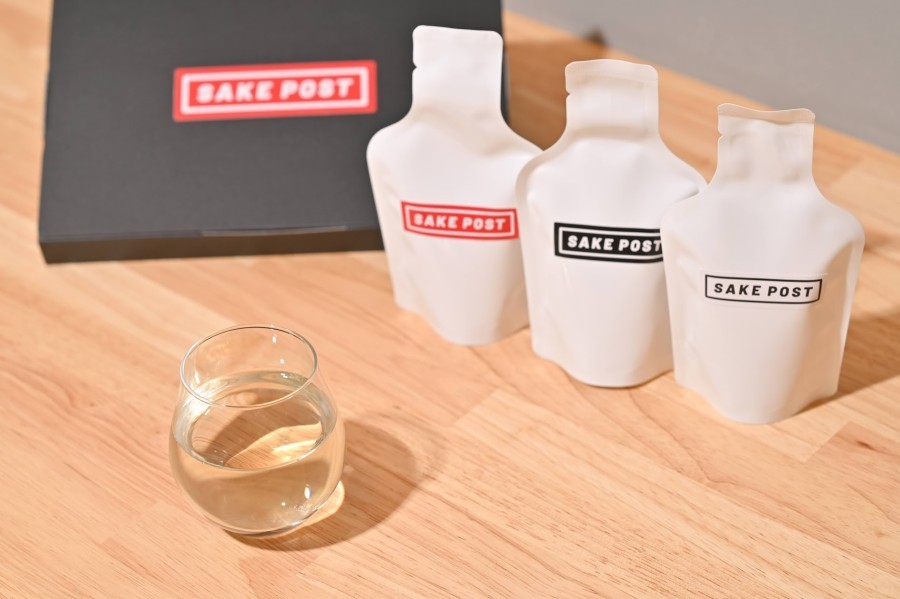Brand? Branding? It's kind of confusing!
It has been more than a quarter of a century since I first received a fee from a client as a branding consultant. Incidentally, my first job(?) in branding was to lecture the management of the third largest advertising company in Japan (i.e. the company I belonged to) on 'What is branding? I was probably around 1995 when I was asked to give a lecture on what a brand is to the management of the third largest advertising company in Japan (that is, the company I was a part of).
...but it is natural that the meaning and actions that branding refers to will change because that much time has passed. We don't think about that kind of time flow, which is why the story is confusing.
In this sense, I, who have walked alongside the history of 'branding' in Japan (note 1), am the most qualified commentator... So, let me explain.
This post was inspired by a Nikkei Trend web article titled 'Branding Misconceptions', so we hope you will take a look at that article as well. (https://xtrend.nikkei.com/atcl/contents/18/00778/00003/?fbclid=IwAR2tDkqruTWqUa1Ki8OlkDIgVXJZJrGiVWZuHuwhKFTx7nbLOjRL4sxQnUk)
advertisement
What is a brand?
Let's start by answering the question, "What is a brand?" and start by answering the question "What is a brand?".
A brand is a 'special name'.
That's all! Now, if I may be so unkind,
It really is a 'special name '.
More specifically, it is a 'unique identifier'.
Firstly, 'special' or'unique' indicates that the trademark is protected and cannot be used if it is already registered.
If it were a person's name, they would have the same name.
In the world of brands (trademarks), however, there are no identical names. So the name is exclusive and therefore 'special' and 'unique'.
And the 'identifier '.
In the past, trademarks were only about "readings" and "reading notations".
Since then, however, the number of ' logos','shapes','colours', 'sounds' ,'voices','characters' and'three-dimensional objects ' has increased. These are not strictly speaking 'names', so they are called identifiers as a unit of identification.
So, in a formal sense, it is a 'unique identifier ', and in a softer sense, a 'special name'.
Hey, there's nothing difficult, is there?
*Note that Japanese trade mark law does not include "corporate catchphrases" or "advertisements" among identifiers. But some people identify specific companies or products with them, so we will include these areas in the "special names" and proceed with the discussion in the future.
Give it a good name. That is the basis of the brand.
So choosing a 'good name' for a special name is a fundamental and first step in branding.
-How do you see the background to the misunderstanding of branding as a way of boosting sales by creating progressive advertising or revamping modern packaging design? See above, 'Misconceptions of "branding", Part 4 of 7'.
This is a statement by an editorial reporter, but at least from a brand perspective, 'giving a good name to a special name ' is the most important thing, for example in advertising and packaging. So why is 'branding misunderstood'? It is because this editorial reporter cannot properly distinguish between 'brand' and 'branding'.
As already mentioned, a brand is a 'special name' and choosing a 'good name' for it is a category that should be done with the brand. It is more than a category to be done, it is a top priority.
So what is 'branding'?
What is branding?
Brand is a noun (not a verb). And branding is 'branding' when you add -ing (present progressive) to something that is not even a verb. In other words, it is a coined word. Because it is a coined word, Dentsu was able to register it as a trademark.
Now, a word with similar origins is 'marketing'.
The noun 'market' plus -ing (present progressive).
So, what is marketing? one of the most frequently heard answers to the question "What is marketing?" is "Changing from a system that sells to a system that keeps on selling ".
What is it? This feeling that they seem to be saying something, but don't know what they are saying... Frankly, when I see people like this, I think, "He seems to understand, but he doesn't" and "Oh, he is someone who doesn't think for himself and lives by quotations".
The straightforward approach is to make the market presentable,
That means 'producing or activating markets'.
The difference between the sales era (or more precisely the manufacturing era) and the marketing era is the change from 'product creation' to 'market creation'.
Branding is about making the brand presentable.
In this light, branding is about making the brand presentable, i.e. "revealing what makes a brand special and valuable " that creates or revitalises it.
If there is a strong benefit and uniqueness unique to the product, such as a 'taste' or 'health benefits' that can only be experienced with that product, customers will naturally remember this and choose it without anyone telling them. See above, 'Misconceptions of "branding", Part 4 of 7'.
In the aforementioned article on 'branding misconceptions', Nishiguchi's answer to 'taste and health benefits' is exactly what 'branding', i.e. 'what makes a brand valuable ', is.
So there is no misunderstanding of branding; the editorial reporter is talking about 'branding' and Mr Nishiguchi is talking about 'branding'.
Yes, this concludes the explanation of the root causes of the misunderstanding!
I would like to say that, in fact, there are still some misconceptions about the branding that Mr Nishiguchi is referring to, and this is where I come in.
Branding is also evolving.
Earlier, we talked about 'brands' changing.
What started out as 'purely a name' was transformed into other identifiers (logos, sounds, three-dimensional objects, ...), wasn't it? So brands are evolving, in line with the times.
Similarly, 'branding' is changing.
However, whereas branding change is "a type of evolution in which the essence remains the same but the scope of the brand has expanded ", branding change is "a type of evolution in which the essence changes ".
Branding 1.0 = 'synonym for quality' = the company takes the lead.
First, consider the branding of the original beginning.
This corresponds to Marketing 1.0 as advocated by Kotler.
In other words, 'the source of value is the product' and 'good quality makes a good brand'.
The branding that Mr Nishiguchi is referring to is 'Branding 1.0', i.e. the idea that 'brand = synonym for quality'.
As Kotler says, "80% of companies are at the Marketing 1.0 stage". Mr Nishiguchi's background is as a 'manufacturer' of 'consumer goods'.
But for Brand Logistics Y.K., the company of Yuriko Koide, who launched So-net, launched Postpet, launched aibo marketing, and Shozo Koide, whose main field is educational branding, including universities, "this idea is old".
Because...
The essence of a brand is a state in which the purchase and use of a product or service becomes a habit, becomes an integral part of the customer's life, and is picked up and used even without being made aware of it. See above, 'Misconceptions of "branding", Part 4 of 7.'
... So, it's not good enough.
Not 'unaware', I want you to be very, very aware. "
I want you to think only about me (the brand) at all times. And I want you to be aware of me and come to see me. If you want, I want you to bring other people with you.
Brands need to be aware of and love themselves so much now.
So let us guide you beyond Branding 1.0, not Mr Nishiguchi.
Branding 2.0 = 'symbol of differentiation' = customer takes the lead
Mr Nishiguchi was involved with Pampers.
Pampers is a 'brand in the eyes of the buyer'. In doing so, a 'synonym for quality' is necessary. But it's not something you can flaunt to others , saying 'I wear Pampers '.
But what about Gucci and Vuitton?
Ah! That man has Gucci or Vuitton! I wish other people would notice that.
And oh, I'm so hot with my Gucci and Vuitton! I'd like to pat myself on the back.
And it is not just a phenomenon of so-called high brands.
For example, Uniqlo.
Uniqlo, it's cheap. So it's not 'I want you to see it' like Gucci or Vuitton...
But there must be a certain number of UNIQLO users who " actively choose to wear UNIQLO and want to intertwine that with their own argument (spending money on clothes is lame, right? )".
Because they know this, Uniqlo "made celebrities and ordinary people the main actors at the same time" in their commercials.
These two examples are two sides of the same coin.
Some, like Gucci and Vuitton, are 'so expensive that the cost of the product cannot be explained by the cost of the product', while others, like Uniqlo, have 'cheap products but an odd sense of pride'.
Yes, this is 'differentiation '.
However, this is not 'product differentiation' where the company takes the lead in the article 'Brand differentiation is not about "comparison with competitors"', but 'customer differentiation', or 'lifestyle differentiation' where the customer takes the lead! (Lifestyle is a katakana word, but you'll have to forgive me this much.)
This direction of differentiation on the customer axis (lifestyle axis) rather than the product axis is a trend that occurred in the 1990s." Japan as No.1". Having lost the product race, the US seized this new trend and grew through branding. It is also important to consider the defeat of Japanese companies against US companies as the defeat of Branding 1.0 against Branding 2.0 (failure to win the value-added competition).
Brand 2.0 is about "using the product (1.0) as a symbolic tool to differentiate the customer's own lifestyle from that of others".
Whereas the star of Brand 1.0 was the 'product (quality) ', the star of Brand 2.0 is the 'customer (lifestyle) '.
Brand 2.0 is about "using the product (1.0) as a symbolic tool to differentiate the customer's own lifestyle from that of others".
Whereas the star of Brand 1.0 was the 'product (quality) ', the star of Brand 2.0 is the 'customer (lifestyle) '.
Branding 3.0 is a 'flagship of co-creation (community)' = the community takes the lead.
How does Branding 3.0 differ from 1.0 and 2.0?
Its representatives are.
J-League (Japanese volleyball league)
Is.
Younger people may not know this, but this was the Japan Football League before the J-League. Similar to this year's opening match, Yokohama F Marinos vs Kawasaki Frontale (the 20,000-plus capacity Todoroki Stadium was full), the very popular club of the time, Nissan vs Yomiuri Club, only 3,000 people attended the match.
Above all, the J-League has grown from 10 to 60 teams in the last 30 years. It is difficult to find a prefecture in Japan that does not have a J club.
So what is this success?
It is not so-called entertainment (live) consumption.
It is hardly a successful business, like film or music, where the price is entertainment. Rather (especially in rural areas), football is not a 'consumer good', but a joint participation project in which customers create a local culture with the team.
Yes, customers are not consumers.
Customers are not consumers, but participants and co-creators who create value together.
Of course, not only the customers, but also the sponsors and the shopkeepers who run kitchen cars at the stadium should be aware that they are participating in creating value together, not just in terms of economic benefits.
In the marketing world, customers, competitors and collaborators are all considered as 'objects', i.e. as 'manipulated objects to be manipulated by the subject'.
In the world of Branding 3.0, however, customers and collaborators are not 'objects' but 'co-actors'.
Earlier, I said that music is entertainment consumption, but in the early days of AKB48, too, the customers were not consumers but co-actors, and together they created the dream of AKB48.
The big hits of our time are based on the co-creation of Branding 3.0 (rather than the competition of Branding 1.0).
The subject of Branding 1.0 and 2.0 is the company (product).
Branding 3.0 includes customers and is a 'joint entity'.
We have seen a history of the evolution of branding.
What I want to draw your attention to here is the change of subject, which is also the sub-heading.
The difference between Branding 1.0 and 2.0 was whether the playing field was 'in the corporate value chain' or 'in the customer's mental world'.
However, the 'subject remained the company (product)'.
However, with Brand 3.0, the playing field has changed and the subject has changed.
so to speak
'Before the circle (product), make the edge.'
'You don't make the product, you build the relationship.'
This is a significant change.
So far, we have followed changes in brands and branding strategies.
And changes in branding lead to changes in strategy.
Different levels of strategy and tactics.
Branding has literally become a 'strategy'.
The term 'branding strategy' is often used.
This means organising and utilising what makes up a brand in an integrated and big-picture way.
Branding 'strategies' are only one 'tactic' of marketing in the bigger picture.
However, it is a perspective that puts branding in the lead.
From a larger perspective, i.e. from a marketing perspective, branding 'tactics ' are a means of marketing 'strategy'.
It is just like a section manager who is overbearing in his section, but when the head of the department comes, he is not up to the task. If the president (corporate strategy) comes to the department, the department head will not be able to raise his head either.
Branding 1.0 belongs to the product 'Tactics', one of the 4Ps of marketing strategy.
Branding 2.0, likewise, belongs to the promotional 'tactics' of one of the 4Ps, the marketing strategies.
Both Branding 1.0 and 2.0 are one tactic of marketing strategy.
It is a technology for the object (the object of manipulation).
The subject is only the product and the company.
Branding 3.0 is a strategy that involves 'co-actors'.
Branding 3.0 is different.
This is a change at the strategic level, where 'actors become co-actors'.
The show window decoration of the Patagonia Kamakura shop (the old Patagonia Japan office) reads 'You have the power to change the way clothing is made'.
There is no traditional 'manufacturer/consumer' distinction here.
They are saying that manufacturers and customers should work together to change the way manufacturing is done (social system ).
This is what 'Purpose ' is. (Purpose is the 'raison d'etre'. But since there's a 'Purpose Boom' in the business world at the moment, I'm going to go out on a limb and be a Purpose mum just to get in on the excitement.)
By Branding as a Purpose 3.0
- The "product" is transformed from a seed concept to a customer life-value concept.
- 'Places ' are transformed from being left to others (department stores and mass retailers) to being designed meeting places (concept shops).
- 'Promotion' changes from advertising to customer recommendations (social networking).
- 'Price' changes from competition and brand-switching to non-competition and lifetime value.
In other words, Branding 3.0 changes the 4Ps = marketing strategy. This change is extremely important.
Because at this point, 'branding, which was a sub-tactic of marketing strategy' turns into 'a higher-level strategy that integrates marketing tactics '.
When branding is linked to perpasses, it becomes equivalent to corporate strategy.
Branding 3.0 is then linked to Purpose.
Why did Branding 3.0 create a major reversal from branding tactics (subordinate to marketing strategy) to branding strategy (superior to marketing tactics)? It is because Branding 3.0 has created a 'value-creating co-creation community '.
These actors are not linked by traditional 'economic relationships' such as capital or business relationships.
Rather, it is built on an 'allyship' (especially when customers are considered as co-actors), where they 'agree with the purpose and support it'.
In this case, the Purpose is what binds the independent allies together in one direction.
Pulling people together comes at some cost.
Sometimes at the expense of the company's own (immediate) profits, but in accordance with Purpose.
That is why value-creating communities are created and the banner is Branding 3.0.
まとめ
Branding or branding is difficult to understand because each concept is expanding, but we follow it chronologically and do not "think of it in segments". It is not difficult to think of each of these concepts in isolation.
This paper has followed three time-series changes.
- Quantitative change in brand (name)
- Qualitative changes in branding (value)
- Structural changes in strategy/tactics (actors)
If you follow the changes in this way, you will be able to see "what's wrong with you now" and bring branding into your own personal life.
We hope that this paper will be of use to you.
advertisement






